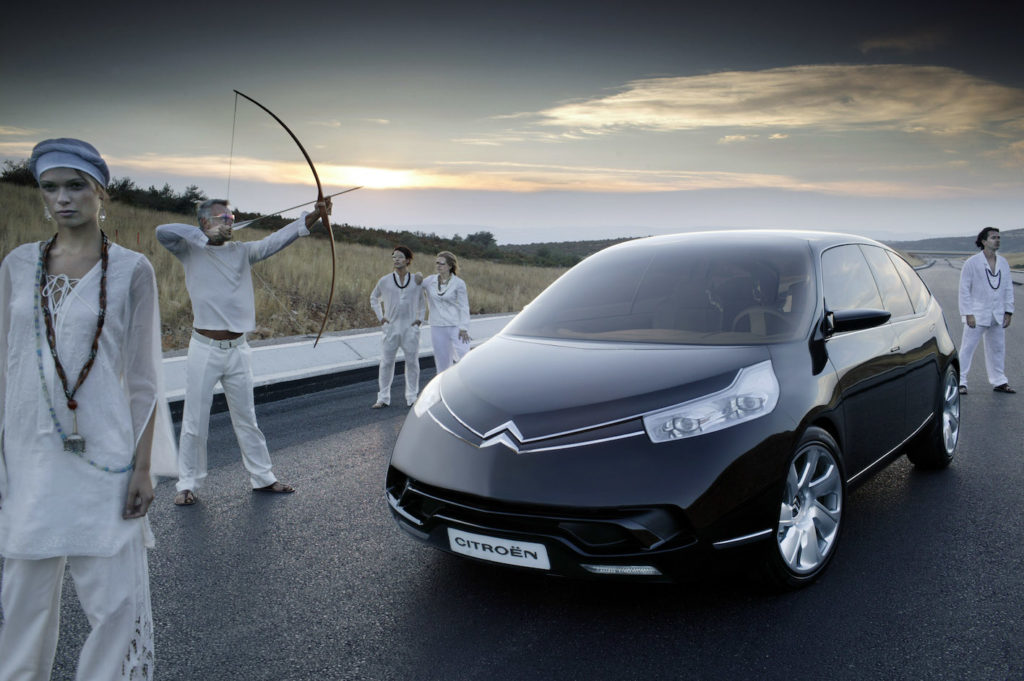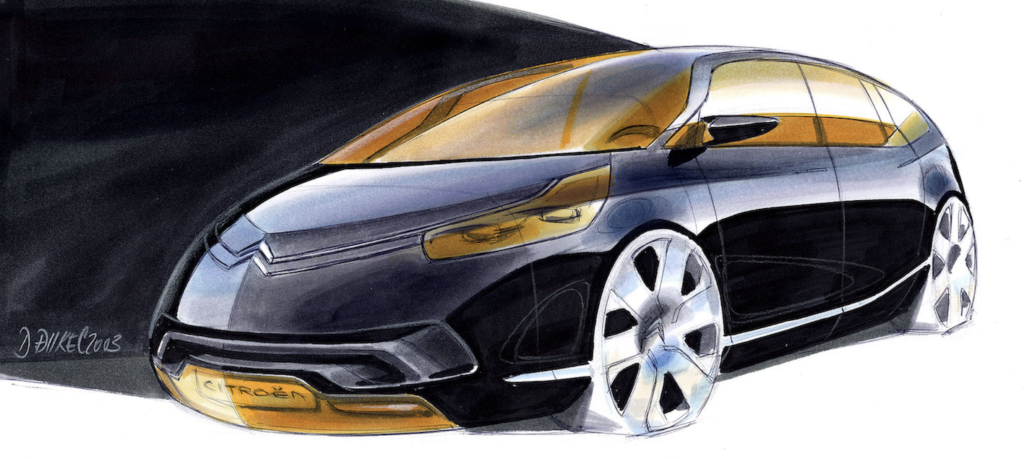
At a time when the car world had not yet been overwhelmed by the SUV concept, Citroën imagined in 2003 that it could carry six people in a way other than in an MPV: here was C-Airlounge and its concept, which was quite original at the time.

The BMW X5, which appeared almost three years ago, has not yet given birth to the BMW ‘X’ range. The motoring world has not yet experienced the SUV frenzy, and is still a fan of MPVs, but manufacturers’ marketing departments are already sensing that the concept of this voluminous car, capable of carrying up to seven passengers, needs to evolve. Before being swept away by SUVs, MPVs will be trying out other concepts, such as the low, roomy estate car.

The C-Airlounge concept car presented at the 2003 Frankfurt Motor Show was one of the first to take this route. It was followed, five years later, by the Renault Ondelios concept car, which also ventured to answer the same question: how to seat six passengers in royal comfort and in an interior worthy of a private jet!

Unveiled a year after the C-Airdream concept car, C-Airlounge took up its identity with winged chevrons and no radiator grille. This theme was quickly abandoned, however, as Jean-Pierre Ploué directed Citroën’s design towards less plunging, less frail and more expressive front ends.

In 2003, this design language is still relevant today. The C4 Picasso, which will go on sale in 2006, three years after C-Airlounge, takes up exactly this identity, with the bars of the double chevron joining the headlamps on a plunging bow that has no grille. At less than 4.50 metres in length, the production MPV is in a lower segment than the C-Airlounge concept car. At almost 4.90 metres, the 2003 concept car seats six passengers (including the driver) in a very upmarket ambience.

Domagoj Dukec, now head of BMW design, is responsible for the design of this show car prototype, reporting to Adrian van Hooydonk. Domagoj was responsible for the development of the Citroën Hypnos concept car in 2008. The C-Airlounge has been designed without an edge line. Its sides are smooth, and the absence of a side pillar contributes to the cabin-style effect. To compensate for the absence of side pillars, the seats are fitted with safety belts. The design of the rear lights is reminiscent of those on the first-generation C5 estate.

At a rather low 1.68 metres, C-Airlounge seats five or six passengers in addition to the driver. The first colour of the concept car is a deep black (it will later be repainted in an equally attractive beige) which contrasts sharply with a cabin draped in white leather. This subdued, luxurious atmosphere can be explained by more than just the choice of a light colour.

It is designed to create a real on-board scenography, with small spotlights diffusing different scenes, projecting four different lighting moods onto the seat upholstery and also onto the materials of the door panels, called ‘convivial’, ‘romantic’, ‘baroque’ and ‘intense’.

This work is not without significance, as the 2000s saw a new chapter in the treatment of passenger compartments, with the gradual integration of wires of light. Initially reserved for top-of-the-range vehicles, this new concept is now available on medium-sized city cars.

In 2003, on board the C-Airlounge, this scenography was both amusing and of great interest for this concept car which, some at Citroën admitted, was not the most striking of the early 2000s. In addition to its very uncluttered interior, there is a thick woollen carpet in a nod to the first DS, while the door panels feature silk-covered medallions. Later, DS Automobiles would use this design for its own concept cars…

The luggage are by Hermès. Like the C-Crosser and C-Airdream just before it, the concept adopts a huge glass roof, confirming the feeling of great luminosity on board, where each passenger has his or her own personal space, just like on board a private jet.

But there will be no private jet on wheels. While Renault’s Ondelios gave rise to the 5th generation Espace, Citroën has abandoned the concept of a ‘volumetric estate’ in favour of a vehicle that fully embraces the stylistic codes and size of a full-blown SUV. The C5 Aircross will also push the C4 SpaceTourer MPV, formerly the C4 Picasso, into retirement!


